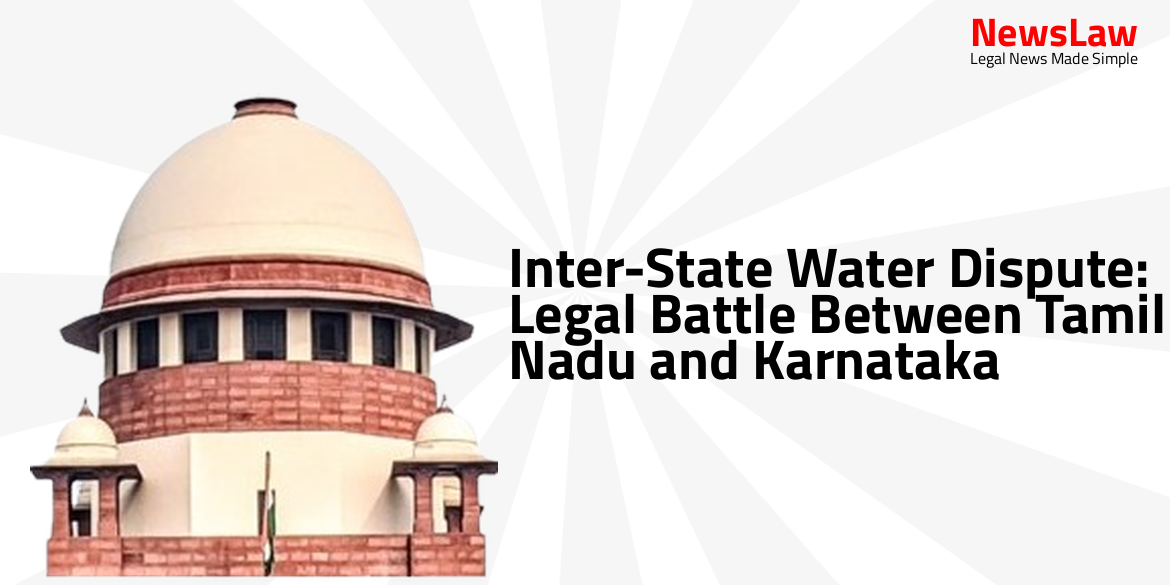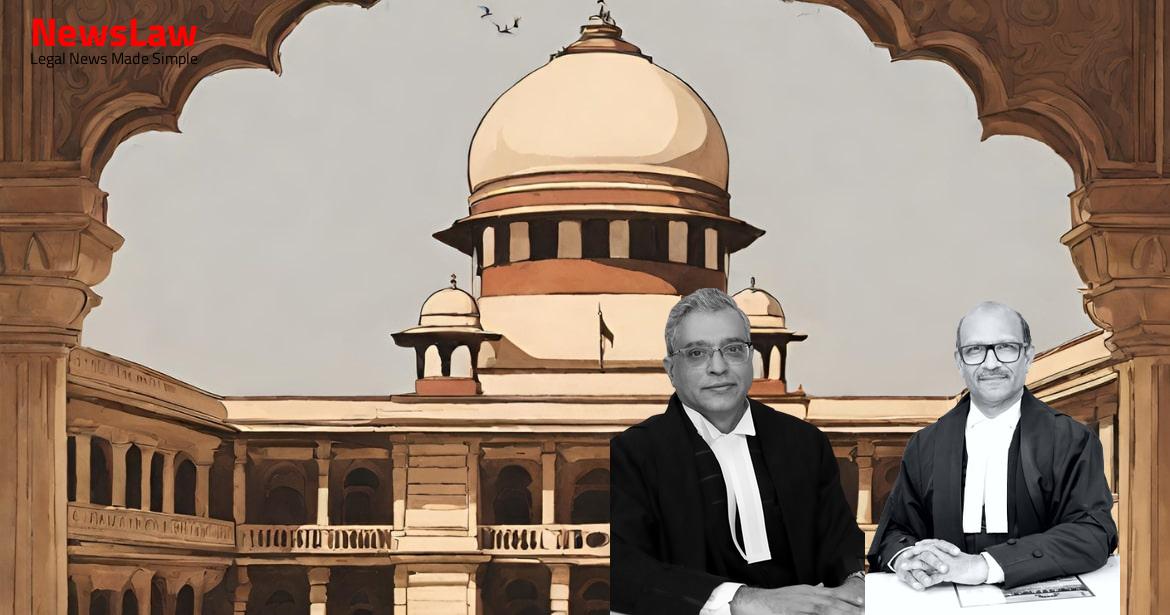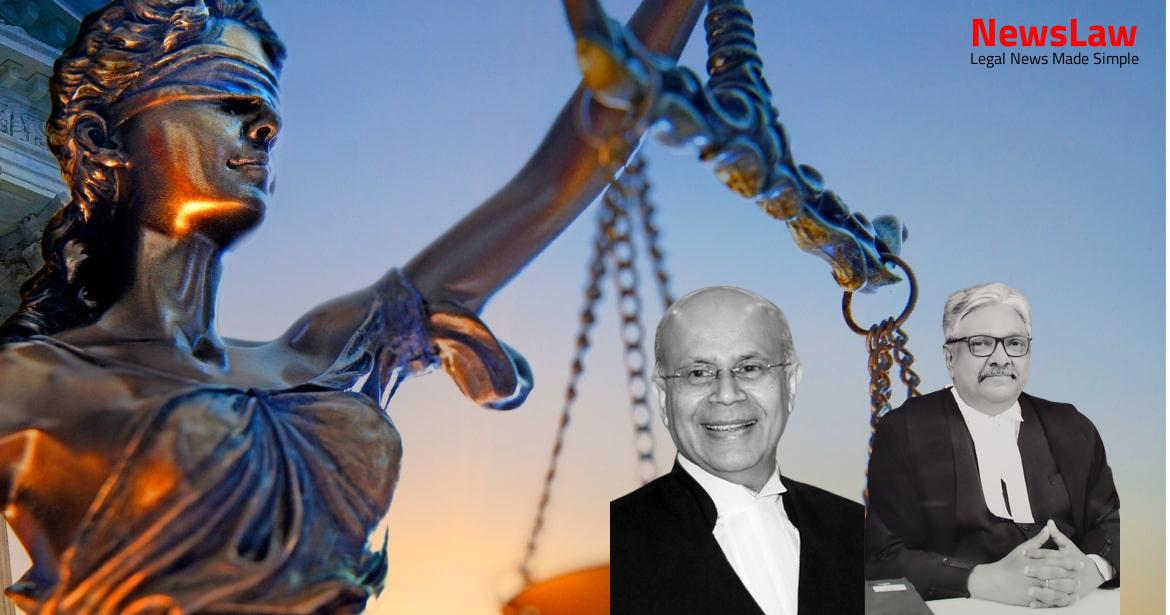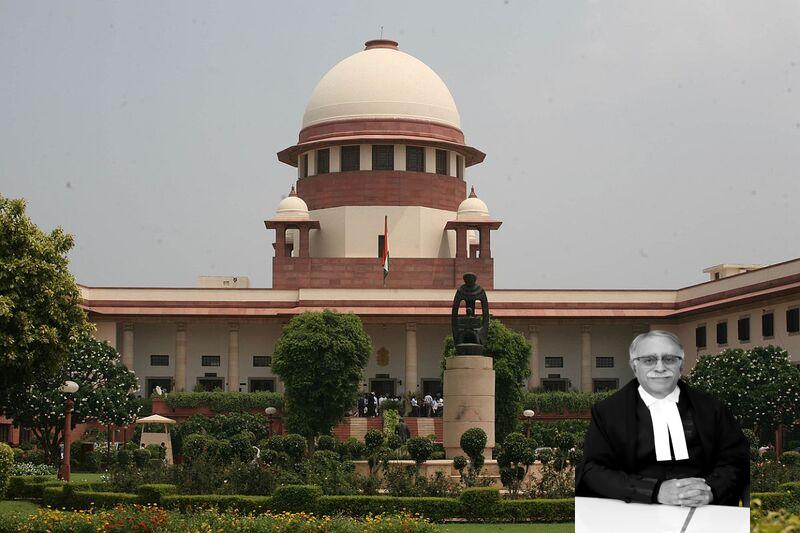In a major legal showdown, the Supreme Court of India recently issued a judgement in the Inter-State Water Dispute case involving Tamil Nadu and Karnataka. The case revolves around the construction of a dam across Markandeyanadhi river, raising complex issues of water rights and historical agreements. The Court’s decision is set to have far-reaching implications for both states. Stay updated on the developments and implications of this crucial case.
Facts
- The Plaintiff State filed a suit against the Defendants to restrain them from constructing Check Dam/Anicut across Markandeyanadhi and Pennaiyar river.
- The Plaintiff State visited the Anicut site and found preliminary works underway.
- The Plaintiff State requested full details of the proposal and expressed concerns about the impact on farmers and water flow.
- The Plaintiff State accused the Defendants of violating common law rights and agreements by proceeding with construction activities without consent.
- A news report suggested that the Defendants planned to divert water to replenish tanks in Karnataka, affecting the Pennaiyar river.
- The Anicut location is in a forest area, about 9.0 km from the Inter State border.
- The Plaintiff State highlighted the historical significance and ayacut irrigated by the Anicut.
- Communication between the Plaintiff State and Defendants indicated disputes over water diversion plans.
- The Plaintiff State claimed jurisdiction under Article 131 of the Constitution to address the inter-State Agreement of 1892.
- Details of the proposed Anicut included length, water storing capacity, and project cost.
- Concerns were raised about the potential impact of the new Anicut on water flows in Markandeyanadhi.
- Four existing Anicuts across Markandeyanadhi in Tamil Nadu may be affected by the new construction.
Issue
- The second defendant, Union of India, stated in its Written Statement that no request for appointment of an arbitrator under Rule-IV of Agreement 1892 has been received from either State Government.
- The Central Government has not taken any action as per the agreement due to the lack of request for appointment of an arbitrator.
- The issue of appointing an arbitrator in accordance with the agreement remains pending as of the date of the Written Statement.
Also Read: CRPF Act: Validity of Rule 27 for Compulsory Retirement – Case of Head Constable vs. CRPF
Arguments
- The Plaintiff denies the contention of the Defendant that no request has been received from any State Government for constitution of Board under the provisions of River Boards Act, 1956 and for setting up of Tribunals under the Act.
- The Plaintiff argues that whether Markandeyanadhi is specifically mentioned in the 1892 Agreement is not relevant, but the principles that no new structure should be constructed without the concurrence of lower riparian State or without affecting the existing utilization in the downstream areas are important.
- The construction of a large dam across Markandeyanadhi is stated to prejudicially affect the downstream areas in Tamil Nadu according to the Plaintiff.
- The Defendant argues that despite various communications from the Plaintiff, no request was made in the prescribed form invoking the powers of the Defendant to constitute a Tribunal to consider the disputes in question.
- The parties await the opportunity to lead evidence and make appropriate submissions on the merit of the matter including the maintainability of the suit.
- The Agreement of 1933 between the States of Madras and Mysore did not mention the river Markandeyanadhi, but based on legal precedent, a tributary would be considered part of the Inter State River covered by the agreement.
- Clause 1(3) of the Agreement of 1933 allowed for the creation of anicuts or smaller canals if no irrigation was involved.
- There was a discussion on whether the matter should be referred to a Tribunal under the Indian State River Water Disputes Act, with references to relevant court decisions.
- While the Agreement allowed for smaller canals, it did not apply to irrigation projects involving dams with a height of 36 metres.
- The first defendant argued that the suit was not maintainable under Article 262 of the Constitution of India and Section 11 of the Act, highlighting the lack of communication invoking the power of the Central Government to constitute an Inter State River Water Disputes Tribunal.
Also Read: DAMEPL vs. DMRC: Curative Petition and Arbitral Award Restoration
Analysis
- The Agreement of 1933 applies only to irrigation projects and not drinking water projects.
- The plaintiff is permitted to make an application to the Central Government under the Act for the constitution of an Inter-State River Water Disputes Tribunal.
- Inter-State River passing through riparian states is considered a national asset according to the State of Karnataka v. State of Tamil Nadu case.
- Parliament has promulgated the Inter-State River Water Disputes Act, 1956 for adjudication of disputes relating to waters of Inter-State rivers and river valleys.
- Section 11 of the Act specifies that neither the Supreme Court nor any other court shall have jurisdiction in respect of any water dispute referred to the Tribunal under the Act.
- The Act provides for setting up Water Disputes Tribunal for adjudication of disputes when negotiations do not lead to fruitful results.
- No request from any State Government has been received under the provision of the ISWD Act, 1956.
- Article 262 of the Constitution of India allows Parliament to provide for adjudication of any dispute or complaint related to the use, distribution or control of waters in any inter-State river or river valley.
- Under Section 3 of the Inter-State River Dispute Act, 1956, State Governments may send a request to the Central Government if a water dispute has arisen or is likely to arise affecting the interests of the State or its inhabitants.
- Parliament may provide that neither the Supreme Court nor any other court shall exercise jurisdiction in such disputes or complaints.
- The Plaintiff State of Tamil Nadu has alleged that the Defendant State of Karnataka has violated the Agreement of 1892 by undertaking a project to construct a dam across Markandeya river without proper consent.
- The Plaintiff State has requested interim directions to restrain Karnataka from proceeding with the construction and to maintain the natural flow of water to downstream Tamil Nadu.
- The Defendant State of Karnataka argues that the project was undertaken with all necessary sanctions and permissions, primarily to supply drinking water to specific towns and villages.
- The Defendant also contends that under the Agreement of 1933, no permission or consent is required from Tamil Nadu for projects related to drinking water supply.
- Both parties have presented their arguments regarding the interpretation and applicability of historical agreements and legal provisions governing inter-state water disputes.
- The Court is called upon to decide on the maintainability of the suit and the necessity of granting interim relief based on the claims and counterclaims presented.
- It is not correct to assume an idea from the communications of the plaintiff to the second defendant
- Fault cannot be attributed to the second defendant for not constituting a Tribunal under the Act
- There could be various reasons for this decision
Decision
- I.A. No. 95384 of 2019 has been dismissed.
- The plaintiff is advised to make any requests within four weeks from the date of this order.
- The Suit will be listed for further directions on 10 January, 2020.
- There is no reason to entertain the present application.
Case Title: THE STATE OF TAMIL NADU Vs. THE STATE OF KARNATAKA
Case Number: ORGNL.SUIT No.-000001 / 2018



